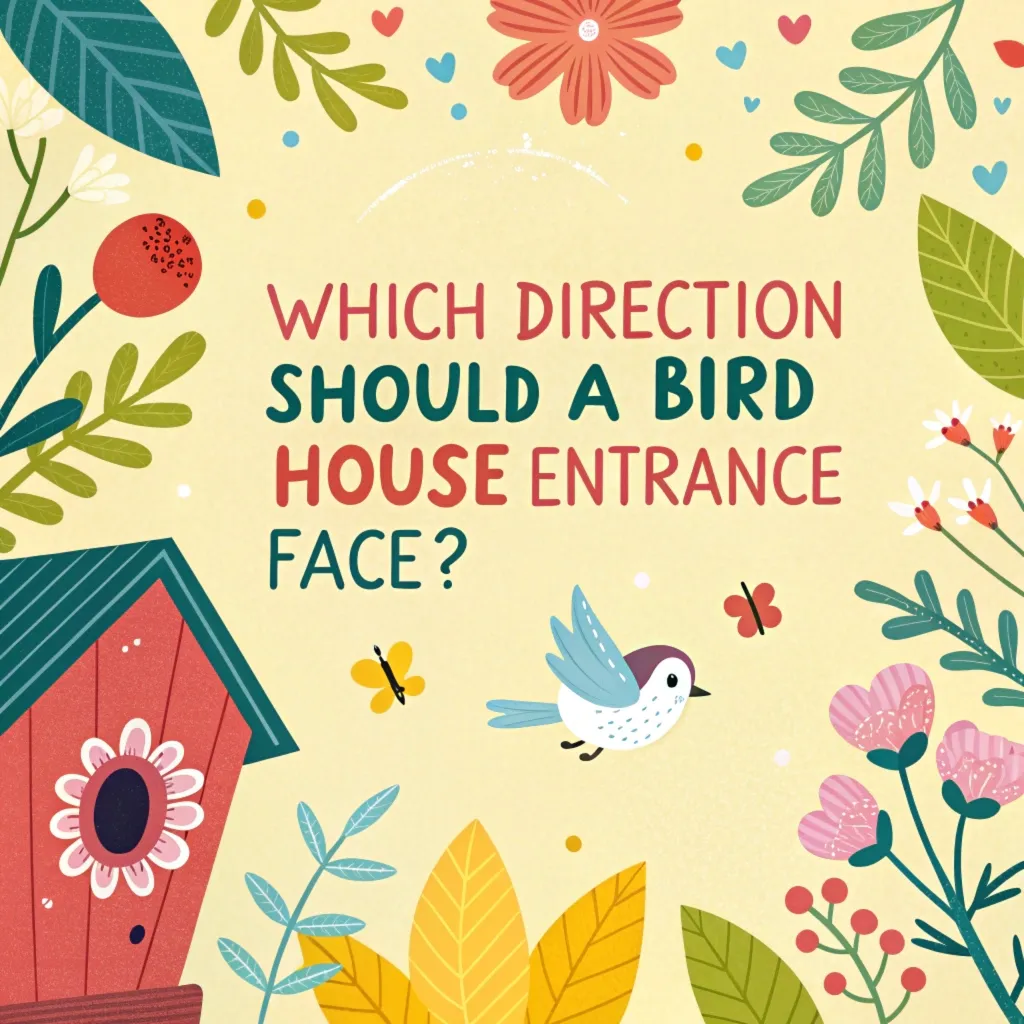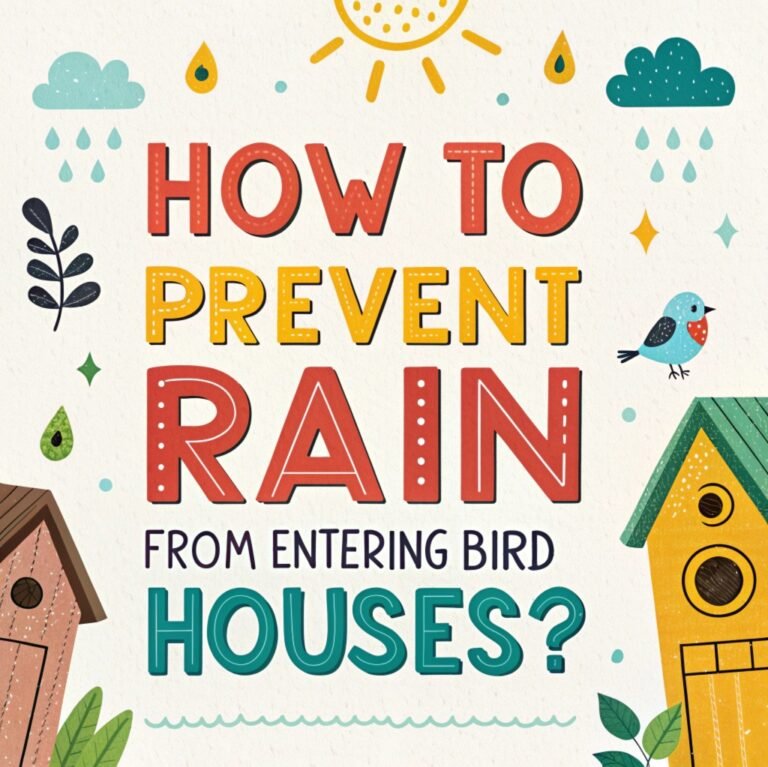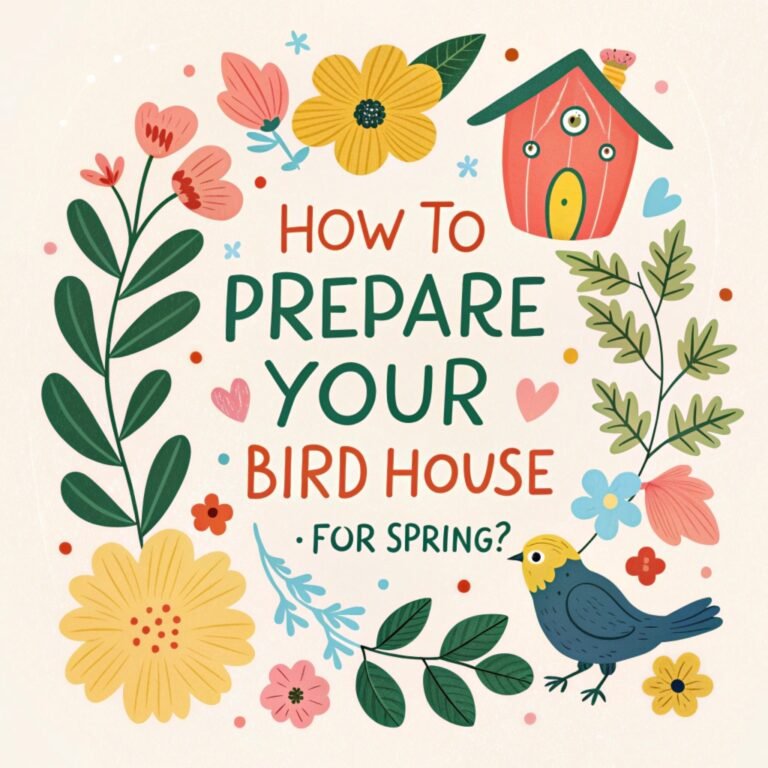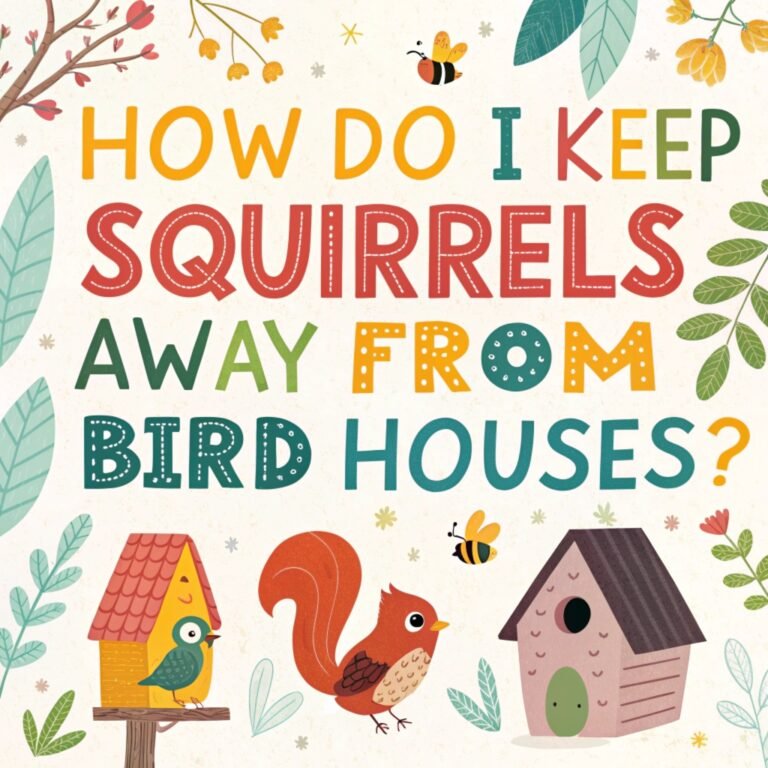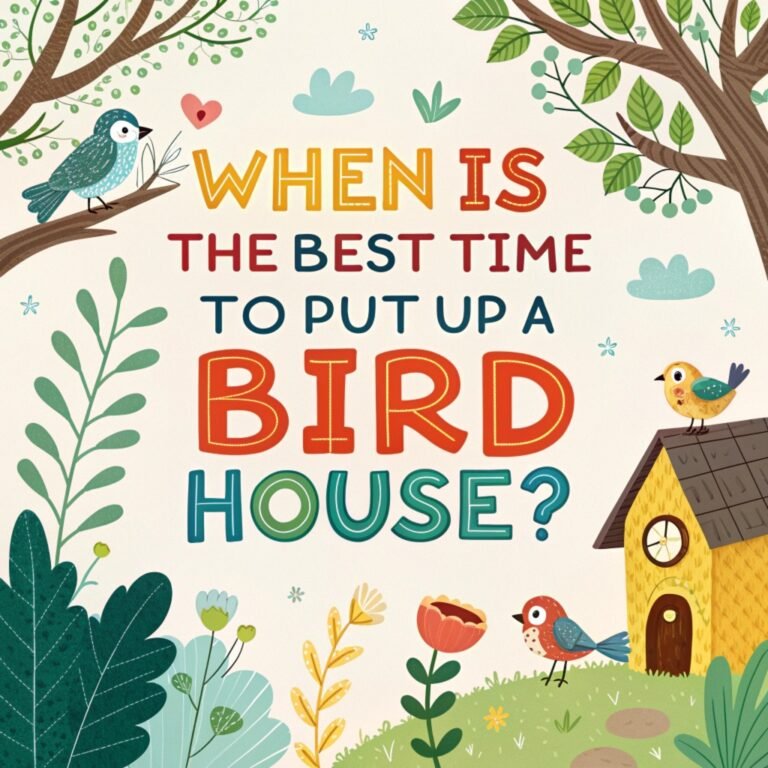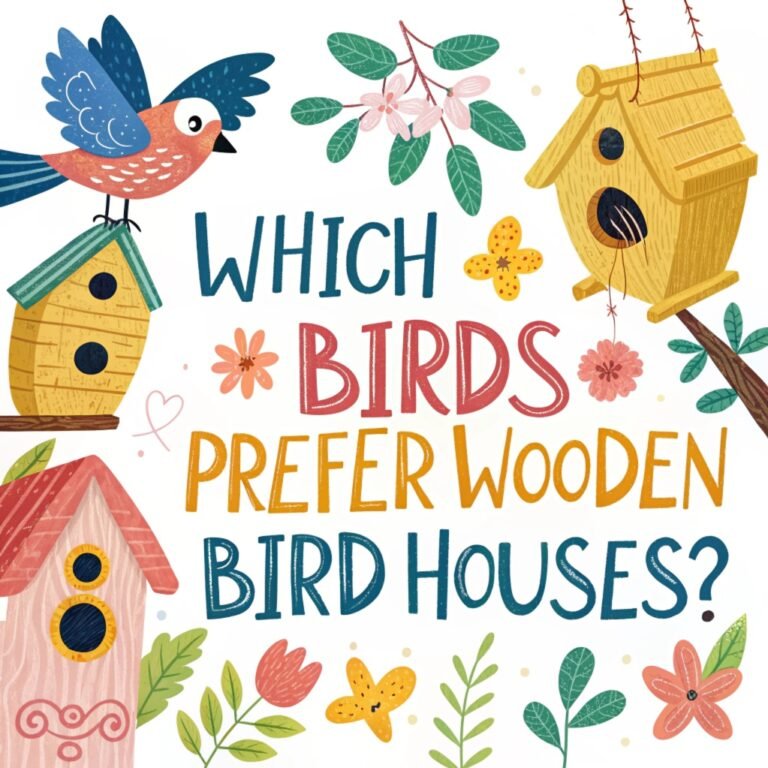Which direction should a bird house entrance face?
Bird houses are essential structures that provide safe havens for our feathered friends to nest and raise their young.
One crucial aspect of setting up a bird house is determining the optimal direction for its entrance.
This comprehensive guide will explore various factors to consider when deciding which direction your bird house entrance should face, ensuring the best possible environment for your avian visitors.
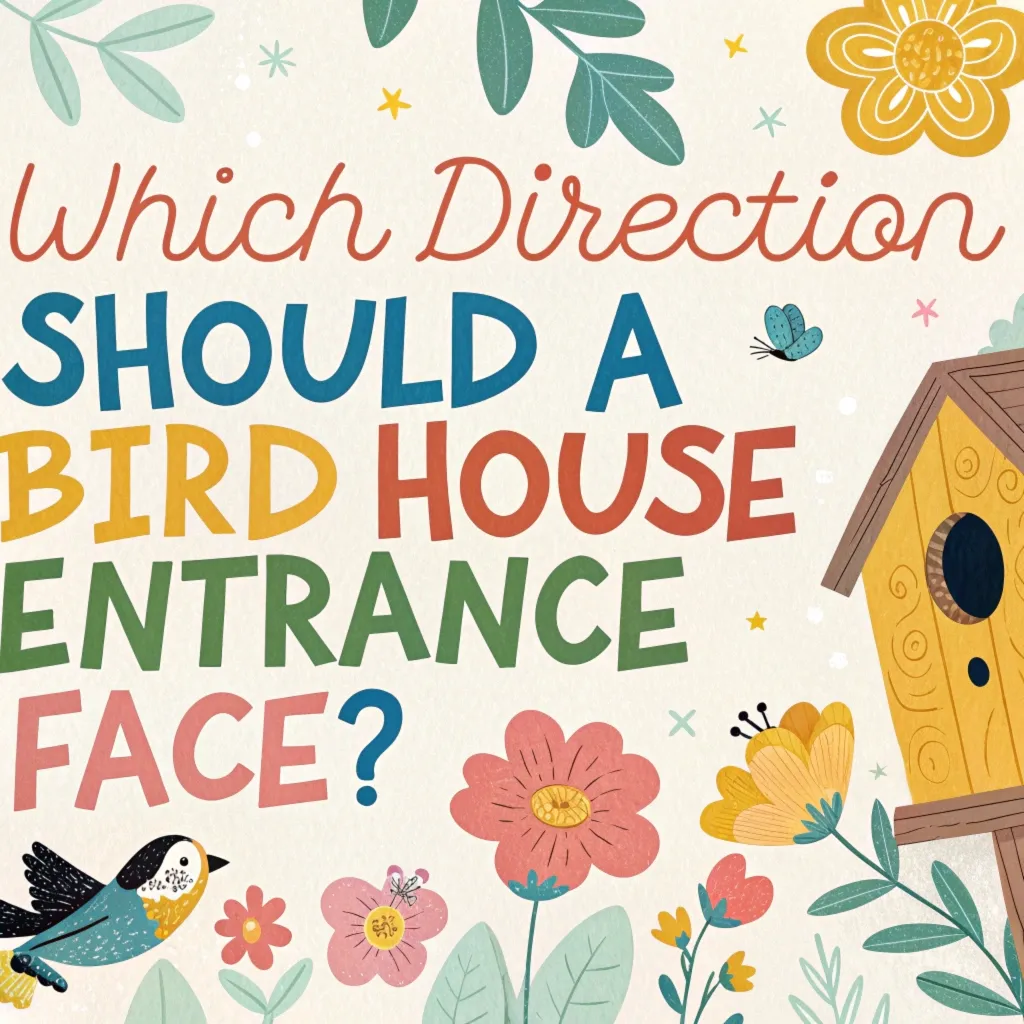
Key Takeaways
Before delving into the details, here are the key points to remember when positioning your bird house:
- Prevailing Winds: Face the entrance away from the dominant wind direction to protect birds from harsh weather.
- Sun Exposure: Aim for a balance between morning warmth and afternoon shade.
- Predator Protection: Choose a direction that minimizes visibility to potential threats.
- Regional Variations: Consider local climate patterns and adjust accordingly.
- Species Preferences: Some birds may have specific orientation preferences, though this is not universal.
- Nearby Features: Take into account surrounding trees, shrubs, and structures when deciding on direction.
- Seasonal Changes: Be aware of how sunlight and wind patterns shift throughout the year.
- Height and Placement: The direction is often less critical than proper elevation and location.
- Flexibility: Be prepared to experiment with different orientations to find what works best in your area.
- Monitoring: Regularly observe bird activity to assess the success of your chosen direction.
Understanding the Impact of Wind on Bird House Orientation
When considering the direction for your bird house entrance, one of the most critical factors to take into account is the prevailing wind in your area. Wind can significantly impact the comfort and safety of nesting birds, making it essential to position the entrance in a way that provides maximum protection.
Generally, it is advisable to face the bird house entrance away from the direction of prevailing winds. This orientation helps to prevent strong gusts from blowing directly into the nest, which could disturb the birds or potentially harm eggs or nestlings.
In many regions, particularly in North America, prevailing winds often come from the west or southwest. Consequently, facing the entrance towards the east or southeast can offer good protection.
However, it’s important to note that wind patterns can vary greatly depending on your specific location, local topography, and even the time of year. To determine the best direction for your area, consider researching local wind patterns or observing wind direction over time.
You can also consult local weather data or use online resources that provide wind rose diagrams for your region. By taking the time to understand and account for wind patterns, you can create a more sheltered and comfortable environment for the birds using your bird house.
The Role of Sunlight in Determining Optimal Entrance Direction
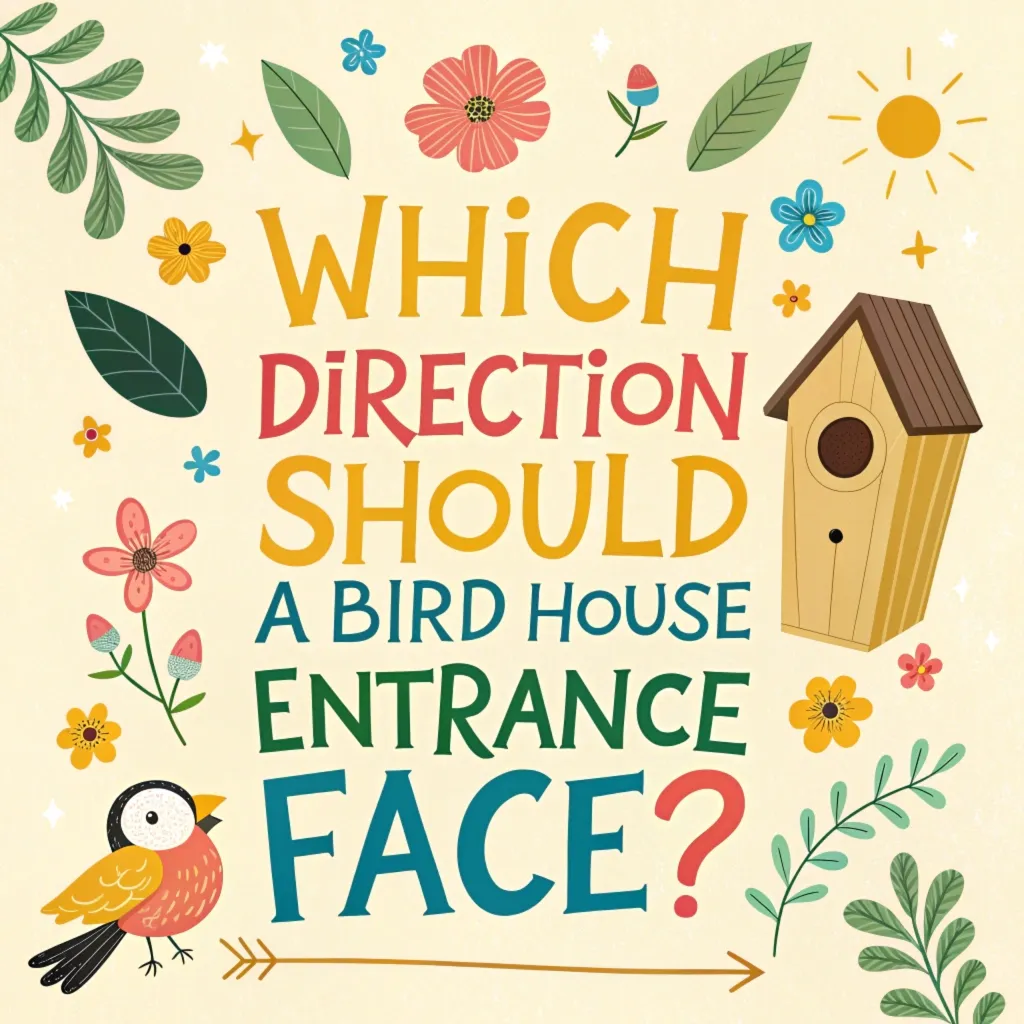
Sunlight plays a crucial role in the comfort and well-being of nesting birds, making it an important consideration when deciding on the direction of your bird house entrance.
The ideal orientation should strike a balance between providing warmth during cooler mornings and offering shade during hot afternoons. In many cases, an easterly or southeasterly direction can achieve this balance effectively.
This orientation allows the morning sun to warm the nest, which can be particularly beneficial in cooler climates or during early spring when temperatures may still be low. The gentle morning light can help birds wake up and start their day, while also providing some warmth for eggs and nestlings.
However, it’s equally important to ensure that the entrance doesn’t face directly into the harsh afternoon sun, especially in warmer regions or during summer months. Excessive heat can be detrimental to eggs and young birds, potentially leading to overheating or dehydration.
If you live in an area with particularly hot summers, you might consider a more northerly or northeasterly direction to minimize direct sunlight exposure during the hottest parts of the day. Remember that the sun’s path changes throughout the year, so what works well in spring might need adjustment for summer nesting.
Protecting Birds from Predators: Strategic Entrance Placement
When positioning your bird house, considering predator protection is paramount for the safety of nesting birds and their offspring.
The direction of the entrance can play a significant role in minimizing the risk of predation. Ideally, the entrance should face away from areas where predators might easily approach or observe the nest. This often means avoiding directions that face open spaces or areas with little cover.
Instead, consider orienting the entrance towards nearby trees, shrubs, or other vegetation that can provide some visual obstruction and quick escape routes for birds. However, be cautious not to place the entrance too close to branches or structures that could allow predators easy access to the nest.
The height at which you mount the bird house is also crucial for predator protection. Generally, placing the house at least 5-6 feet off the ground can help deter ground-based predators.
Some bird species, like bluebirds, prefer houses mounted on poles in more open areas, which can be made safer by using predator guards. Remember that different predators pose threats in different regions, so understanding local wildlife can help inform your decisions.
For instance, in areas with climbing predators like raccoons or snakes, additional measures like cone-shaped guards might be necessary regardless of entrance direction.
Regional Climate Considerations for Bird House Orientation
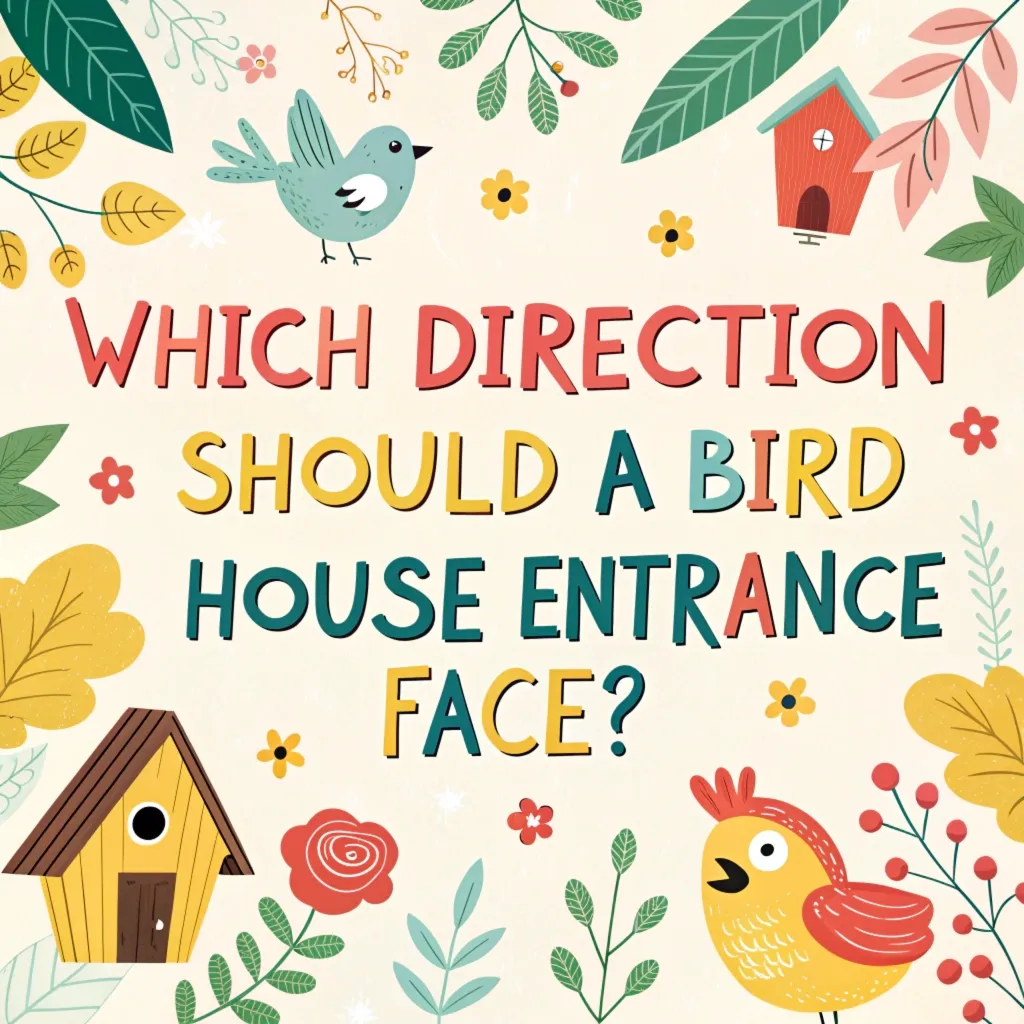
The optimal direction for your bird house entrance can vary significantly depending on your regional climate.
Different geographical areas experience unique weather patterns, temperature ranges, and seasonal changes that can influence the best orientation for a bird house.
In colder northern regions, for example, a southerly or southeasterly direction might be preferable to maximize sun exposure and warmth, especially during early spring when temperatures can still be quite low. This orientation can help keep eggs and nestlings warm during cooler periods.
Conversely, in hot southern climates, a more northerly or northeasterly direction might be better to provide shade and prevent overheating during intense summer heat. Coastal areas might require special consideration due to strong sea breezes or storms, potentially necessitating an inland-facing entrance.
In regions with distinct wet and dry seasons, you might need to adjust the orientation to protect against heavy rains during certain months. It’s also worth considering how your local landscape affects microclimate conditions.
Factors such as nearby bodies of water, mountain ranges, or urban heat islands can all influence local weather patterns and, consequently, the ideal direction for your bird house entrance. Researching your specific regional climate and observing local weather patterns throughout the year can provide valuable insights for optimizing your bird house orientation.
Species-Specific Preferences in Bird House Direction
While general guidelines for bird house orientation are helpful, it’s important to recognize that different bird species may have varying preferences when it comes to nest box direction.
Some species have shown particular tendencies in their choice of nest sites, which can inform how you position your bird house. For instance, Eastern Bluebirds in northern regions have been observed to prefer nest boxes with entrances facing east or southeast.
This preference is thought to be related to the birds’ desire for early morning sunlight and protection from prevailing winds. However, it’s crucial to note that scientific studies have also shown that many bird species do not have a strong innate preference for a specific entrance direction.
A study on Black-capped Chickadees, for example, found that they chose nest boxes randomly when presented with options facing different directions.
This suggests that other factors, such as the overall location of the box, nearby food sources, and protection from predators, may be more important than the specific direction of the entrance.
When targeting a particular species, it’s worthwhile to research their nesting habits and any known directional preferences. However, don’t be discouraged if birds don’t immediately take to a box facing a supposedly preferred direction. Birds are adaptable and will often choose a well-placed, safe nesting site regardless of its exact orientation.
The Influence of Nearby Features on Entrance Direction
When deciding on the direction for your bird house entrance, it’s crucial to consider the surrounding landscape and nearby features.
The presence of trees, shrubs, buildings, and other structures can significantly influence the microclimate around your bird house and affect its attractiveness to potential avian residents.
Ideally, the entrance should face towards some form of nearby cover, such as a tree or bush, which can provide a safe landing spot for birds approaching or leaving the nest. This cover should be close enough to offer quick refuge but not so close as to provide easy access for predators.
Consider how the surrounding vegetation might grow and change over time, potentially altering sun exposure or wind patterns around the bird house. If your bird house is mounted on a tree, be mindful of how the tree’s growth might affect the entrance’s orientation in the future.
Additionally, think about human activity in the area. While many birds can become accustomed to human presence, orienting the entrance away from high-traffic areas or noisy spaces can provide a more peaceful nesting environment.
Water sources, such as birdbaths or natural water bodies, can also influence the ideal direction. Having the entrance face towards a water source (while maintaining a safe distance) can be attractive to birds.
However, be cautious about positioning the entrance directly towards large reflective surfaces like windows or water, as these can pose collision risks for birds.
Seasonal Changes and Their Effect on Optimal Entrance Direction
The changing seasons can have a significant impact on the ideal direction for your bird house entrance. What works well in one season may not be optimal in another, due to shifts in sunlight, temperature, and prevailing winds.
During spring, when many birds begin nesting, an easterly or southeasterly direction can be beneficial. This orientation allows for warming morning sun, which can be crucial in colder climates where early spring temperatures might still be low.
As summer approaches and temperatures rise, a more northerly or northeasterly direction might become preferable to provide shade during the hottest parts of the day. This is particularly important in regions with hot summers, where excessive heat can be harmful to eggs and nestlings.
In autumn, as temperatures begin to cool again, reverting to an easterly or southeasterly direction can once again provide beneficial morning warmth. Winter considerations are also important, even though most birds don’t nest during this season.
A south-facing entrance can offer warmth and protection for birds that might use the box as a roosting site during cold nights.
It’s worth noting that while changing the direction of your bird house seasonally is not practical or necessary, understanding these seasonal effects can help you choose the best overall compromise for year-round use. Alternatively, you might consider providing multiple bird houses with different orientations to offer options throughout the year.
The Importance of Height and Placement in Conjunction with Direction
While the direction of the bird house entrance is important, it’s equally crucial to consider the height at which the house is mounted and its overall placement in your yard or garden. These factors often work in conjunction with direction to create an ideal nesting environment.
The optimal height for a bird house can vary depending on the species you’re hoping to attract. Generally, most small to medium-sized songbirds prefer houses mounted between 5 to 12 feet off the ground.
This height range offers protection from ground predators while still being accessible. Some species, like bluebirds, prefer houses mounted on poles in more open areas, while others, such as chickadees, are comfortable with houses attached to trees.
The placement of the bird house in relation to other features in your yard is also critical. Ideally, the house should be situated away from areas of frequent human activity to provide a quiet nesting environment. However, it should still be visible enough for you to monitor and maintain.
Consider placing the house near natural food sources like native plants that produce berries or attract insects. Avoid placing bird houses too close to bird feeders, as the high traffic can disturb nesting birds.
The surrounding habitat should offer some cover and perching options nearby, allowing birds to scout the area before approaching the nest. Remember that the best direction for the entrance can be influenced by these placement factors.
Experimenting with Different Orientations for Optimal Results
While guidelines and general principles are helpful, the most effective way to determine the best direction for your bird house entrance may be through experimentation. Every location has its unique characteristics that can influence bird preferences and nesting success.
Start by placing your bird house in what you believe to be the optimal direction based on the factors discussed earlier. Monitor the house regularly to see if birds show interest or begin nesting. If you don’t see any activity after a full nesting season, consider adjusting the direction slightly.
You might try rotating the house 45 degrees and observing for another season. Keep detailed records of each orientation you try, noting any bird activity, successful nests, and any problems you observe. This data can be invaluable in understanding what works best in your specific location.
Don’t be discouraged if it takes some time to attract nesting birds. Sometimes, it can take a year or more for birds to discover and feel comfortable with a new nesting site. If you have the space and resources, consider setting up multiple bird houses with different orientations.
This approach allows you to compare results directly and provides more options for potential avian residents. Remember that other factors, such as the type of bird house, the materials it’s made from, and how well it’s maintained, can also influence its attractiveness to birds.
Be patient and persistent in your observations, and you’ll likely find the perfect orientation for your local bird population.
Monitoring and Maintaining Your Bird House for Long-Term Success
Once you’ve determined the optimal direction for your bird house entrance and have successfully attracted nesting birds, it’s crucial to implement a regular monitoring and maintenance routine.
This ongoing care ensures that your bird house remains a safe and attractive option for birds year after year. Start by observing the bird house from a distance during nesting season, noting the species using the box, their behavior, and any signs of distress or predation.
Use this information to make any necessary adjustments to the house’s placement or protective measures. After the nesting season, typically in late summer or early fall, thoroughly clean the bird house. Remove old nesting material, which can harbor parasites, and check for any damage or wear.
This is also an excellent time to make any repairs or improvements based on your observations throughout the season. During your annual maintenance, reassess the direction of the entrance.
Changes in the surrounding environment, such as growing trees or new structures, might necessitate adjusting the orientation. Consider the feedback you’ve received from the birds themselves – if they’ve successfully used the house, it’s likely that the current direction is working well.
However, if you’ve noticed issues like overheating or water ingress, you might want to try a slight adjustment. Remember that consistency can be important for returning birds, so avoid making drastic changes unless necessary.
By maintaining your bird house and remaining attentive to the needs of your avian visitors, you can create a lasting, safe nesting site that birds will return to year after year.
Frequently Asked Questions
Does the entrance direction really matter for attracting birds?
While birds can adapt to various orientations, choosing an optimal direction can enhance the comfort and safety of the nest. Factors like protection from harsh weather and predators are influenced by entrance direction.
What is the best general direction for a bird house entrance?
In many cases, facing the entrance east or southeast is recommended. This orientation often provides a good balance of morning warmth and afternoon shade while offering protection from prevailing winds.
Should I change the direction of my bird house seasonally?
Changing direction seasonally is generally not practical or necessary. It’s better to choose a direction that offers the best year-round compromise for your local climate and conditions.
How can I determine the prevailing wind direction in my area?
You can research local weather patterns, use online resources that provide wind rose diagrams, or simply observe wind patterns in your yard over time.
What if birds aren’t using my bird house despite facing the “correct” direction?
Remember that direction is just one factor. Consider other aspects like height, nearby food sources, and overall placement. Sometimes it takes time for birds to discover and feel comfortable with a new nesting site.

Hello, I’m Amelia White, the founder of birdsfanatic.com. As a lifelong bird enthusiast and spiritual seeker, I’ve always been fascinated by the mystical connections between birds and the human experience. On this site, I share my knowledge and insights into the symbolic meanings and spiritual significance of various bird species, exploring their roles in mythology, folklore, and cultural traditions. Join me on this journey into the world of birds, where we’ll discover the hidden wisdom and guidance that these magnificent creatures have to offer.

